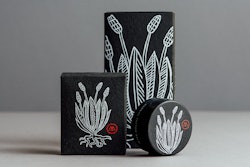Quick hits:
- Apple once required a smartphone app to access QR codes, holding consumer (and brand) adoption at bay. Meanwhile NFC and RFID chips implanted within labels, at least in their earlier forms, were prohibitively expensive for all but the highest end cosmetics and spirits consumer brands.
- Those ‘frictions’ have been significantly abated. There’s no more need for special apps or software to access QR codes, and the touch-free craze of the pandemic introduced the general public to how they work. Meanwhile, NFC chip prices are decreasing as a function of Moore’s Law.
- At SmartPack 2021, a Smithers Event, I learned how brands with even the best content and brand stories have trouble connecting and resonating with consumers since the available channels—on-pack in retail aisles and display, or in social media—are just so crowded. There’s too much competition for attention.
- Intelligent Packaging’s Day in the sun apparently has come. Consumers are more primed than ever to access it, partially thanks to better tech and the pandemic effect, and it’s an entirely brand-owned channel with no competition from peers and competitors. It’s a 1:1 consumer to brand interaction, with no retailer middleman, providing brands with market insights they’ve never had before, and consumers with engagement and interaction with a brand that they’ve never had before.
- Nutricosmetics’ Tamper Evident Label Takes QR Path to Smart Features
- Lipman Family Farms Expands Compostable Packaging, QR Code Shows How to Compost
- Read PMMI's report on the drive toward 4.0 connectivity in packaging and processing.
 | Read the transcript below: |
Hello, I'm Matt Reynolds, editor of Packaging World magazine, back with another edition of Take Five with Packaging World. Well, I spent two days of last week at a virtual conference, and this was SmartPack that was hosted by Smithers. Smithers is a multinational provider of testing, consulting, information, and compliance services. And it was really a chock-full two days.
It was every half an hour for 9:00 to 5:00, both days. So there was a ton of information, really hard for me to distill down into five minutes, but I can bring you some pretty big picture findings.
When we talk about smart packaging, we're really talking about two subsets of smart packaging. One would be active packaging, that would be packaging that's often in the form of time temperature indicators. So think of meat and poultry that has an indicator that actually tells you how long it's been in transit and the temperature, has it maintained the cold chain.
As you can imagine, there's a lot of pharmaceutical applications as well, especially in vaccine distribution, which we know quite well in the last 20 months. The other side of smart packaging which I'll get into a little more closely here is more consumer-facing. And that's what I would call intelligent packaging.
Intelligent packaging is usually in the form of... It's alphabet soup, but it's either the QR code, the RFID code or the Near Field Communication, NFC code, which is a subset of RFID. Like I said, alphabet soup. But what you need to know is that there are applications upstream in the supply chain for distribution and so on, and garnering information as a product moves through the supply chain, all the way down to the consumer-facing last mile, person in the store with a smartphone or in their own home with a smartphone, interacting with the product.
A recent breakthrough on the consumer-facing side of the intelligent packaging front has been Apple's decision to no longer require any specific software or apps or anything to be able to access QR codes in the wild. So basically it's just holding up your smartphone with your camera feature, and it will whisk away to whatever microsite that the brand deems necessary.
That used to be a big hurdle. But again, that friction, those conditions of attendance are being reduced over time. And QR, we've seen over the course of the pandemic, has become our new access point to menus in a food service situation. So that really brings adoption to the fore. People who'd never seen a QR code before are now aware of it and know how to use it. And to a lesser extent, that's also true of all of the other technologies that come with intelligent packaging like NFC and RFID.
Well, we just heard about a few reasons why intelligent packaging is gaining steam, but let's look at the big picture and look at some larger consumer trends that are at play that might factor into this. One of them is the generational change towards Millennials and Generation Z.
We spent a lot of time on this program talking about how they're looking for ways to connect with brands and to seek out and actively engage with brands that share their values. But there's only so many ways that brands can do this.
First of all, there's the actual physical packaging itself, which can serve as a billboard, but then there's social media channels and there's purchased advertising.
One presentation at SmartPack really illustrated, given the very cluttered nature of the existing channels of communication, how intelligent packaging can really help out brands. And that was a presentation by Ian Clough. He's the director of growth and design at a firm called Blue Bite. That's a consumer experience and branding agency.
So his presentation, first of all, set the stage that I just set, what the situation is with Millennials and Generation Z and their expectation for brands, but also the rise of intelligent packaging. And think of what you can do with intelligent packaging in terms of being able to introduce complimentary products, his example was might be a product like a shampoo.
You could directly communicate via QR code and possibly discount a complimentary product like a shampoo or hand soap or body wash or whatever that might be. Think about... Also, I mentioned there is upstream capability with intelligent packaging for track and trace and for distribution to know where that product is along the way by reading QR codes or NFC and so on.
The consumer can actually benefit from that information as well. Consider coconut water. A consumer these days, particularly Generation Z, might want to know where that coconut came from and whether it was sustainably grown. We can find that out and a consumer could potentially, via QR code using information built in from the supply chain, know that this coconut was grown six months ago in Thailand, and know that it was on a sustainable type of farm.
So all that's information that's very... It's pertinent to today's consumer. And finally, it's a matter of getting data and consumer information from your direct consumer. Right now, you've got that black box at the retailer that's standing in between you and your consumer. This is a way for you to even do product testing, market testing. Do you prefer product A or product B, flavor A, flavor B, and get that direct interaction directly with your consumer.
So a lot of big reasons for brands to jump on board the train here, the intelligent packaging train. Some pitfalls to avoid too. Once you have that QR code on a product, that's there forever and a person can interact with that forever. So keep in mind, this is going to be a big investment of time to create content and to continue deliver pertinent content. But the reasons are there to better connect with your consumer one to one with no intermediary, and continue to push that product growth forward.
That's all the time we have for today's Take Five with Packaging World.





















